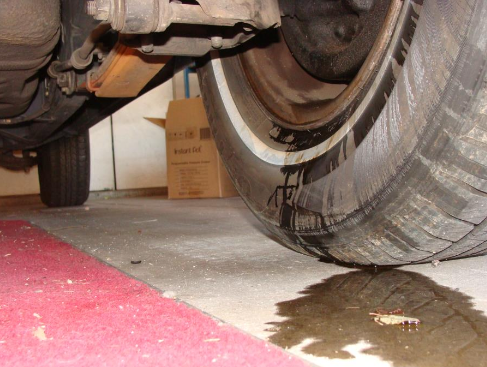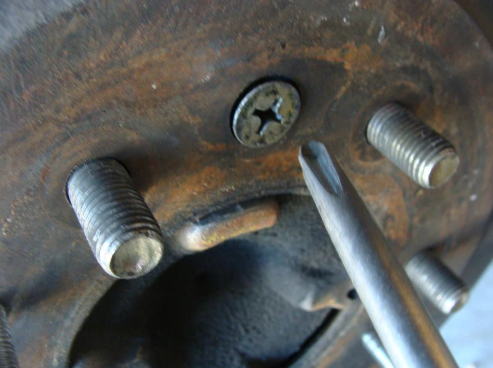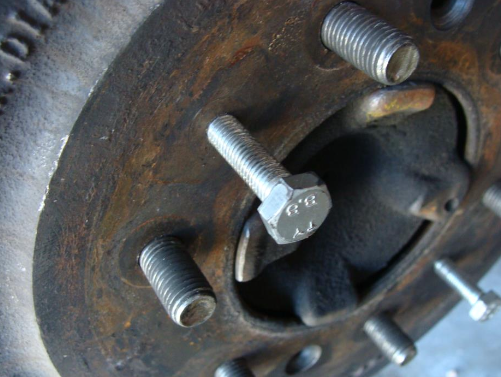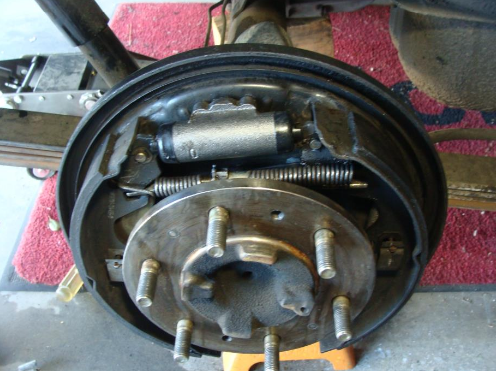Written By Cusser – Slight edits by MazdaMitch
Have a soft pedal but the brake reservoir is not low? You don’t really see any leaks anywhere? Have you ever checked your rear brake wheel cylinders?
It may be time to give them a lot as they can be sneaky leakers.
Note: It is recommended to replace both rear wheel cylinders at a time, even if only one is leaking. Also only the left/driver side wheel cylinder has a bleeder valve, the one on the right does not. When bleeding the brake system start at the furthest most point and then the passenger front and drive front last.

Loosen rear wheel lug nuts using 21mm socket or lug wrench.
Jack up the rear, place the truck on jack stands, now take the wheel off.
Using #3 Phillips screwdriver, remove the two retaining screws holding the drum on.

Sometimes the hub can be hard to get off. Pull off the rubber plug on the backplate and back off the brake adjuster if necessary through the slot; through the slot pull the adjustment lever towards center of truck so the adjuster wheel is released.
Thread two 8.0mm x 1.25mm bolts into the two threaded holes in the drum (these bolts need to have at least 40mm of thread) and tighten down, alternating often, screw then in, to force the drum off.

Put a bowl or rag under the drum to catch any spills.
Using a 10mm flare wrench to initially loosen, remove the line fitting(s); passenger side has two of these, driver side has one and a bleed screw. Remove the hex head screw (10mm socket) holding the line bracket to provide some slack in the lines
Remove the two hex head screws (10mm socket) holding the wheel cylinder to the backplate. Pull the top of the brake shoes as necessary to allow the bad wheel cylinder to be wiggled out. This is what you should have now.

Using aerosol brake cleaner, clean up any brake fluid inside the brakes and drum.
Now put the replacement wheel cylinder into place, making sure that the slots on it engage the inner surface of the brake shoes.
Loosely thread in the two hex head screws holding the wheel cylinder in.
Move/wiggle the wheel cylinder and fittings as necessary to be able to thread in several turns by hand, then tighten the two wheel cylinder securing hex head screws, then tighten the line fittings.
Check again to ensure that wheel slots engage the inner surface of the brake shoes.

Push the adjustment lever and back off the brake adjuster to pull the shoes inward to make it easier to install the drum.
Push the drum on fully and install the two Phillips head screws Manually adjust the rear brakes tighter through the backplate hole Install the wheel and tighten the lug nuts securely.
Add brake fluid to the reservoir, and bleed the rear wheel brakes through the driver side wheel cylinder. I would go ahead and bleed the entire system, so that means after you bleed the rear, move on and do the passenger side front, then lastly the driver side front.
Leave a Reply